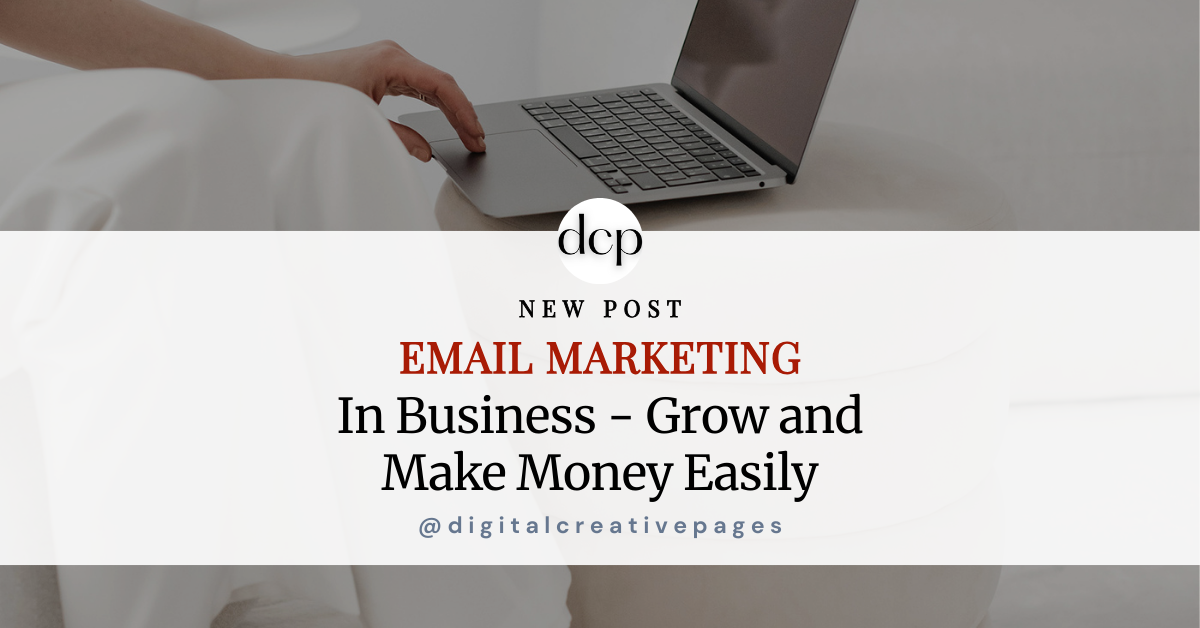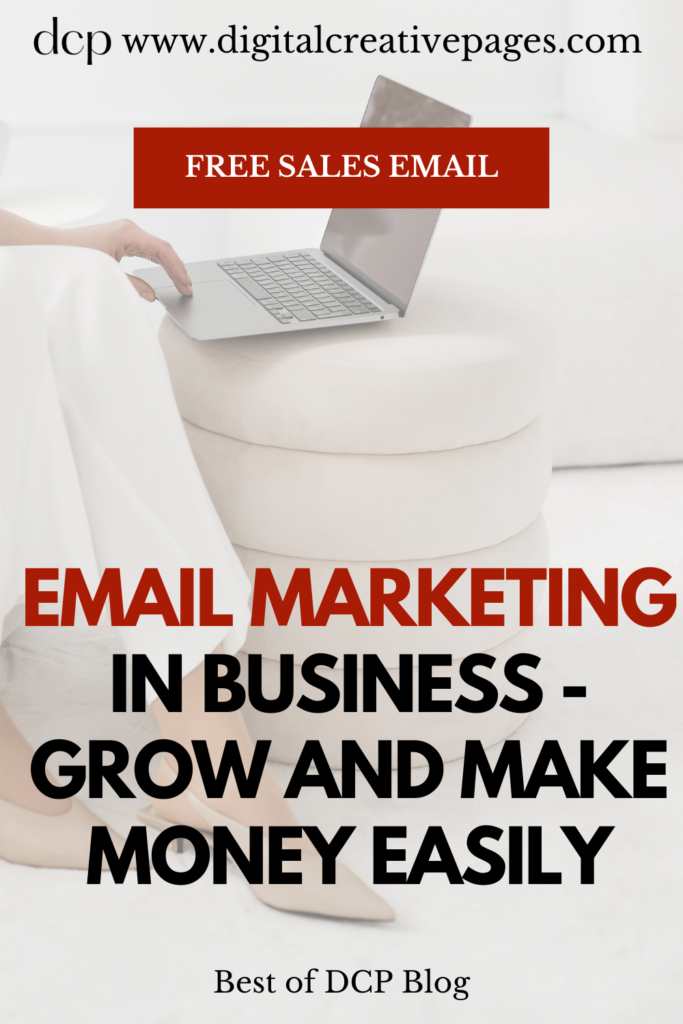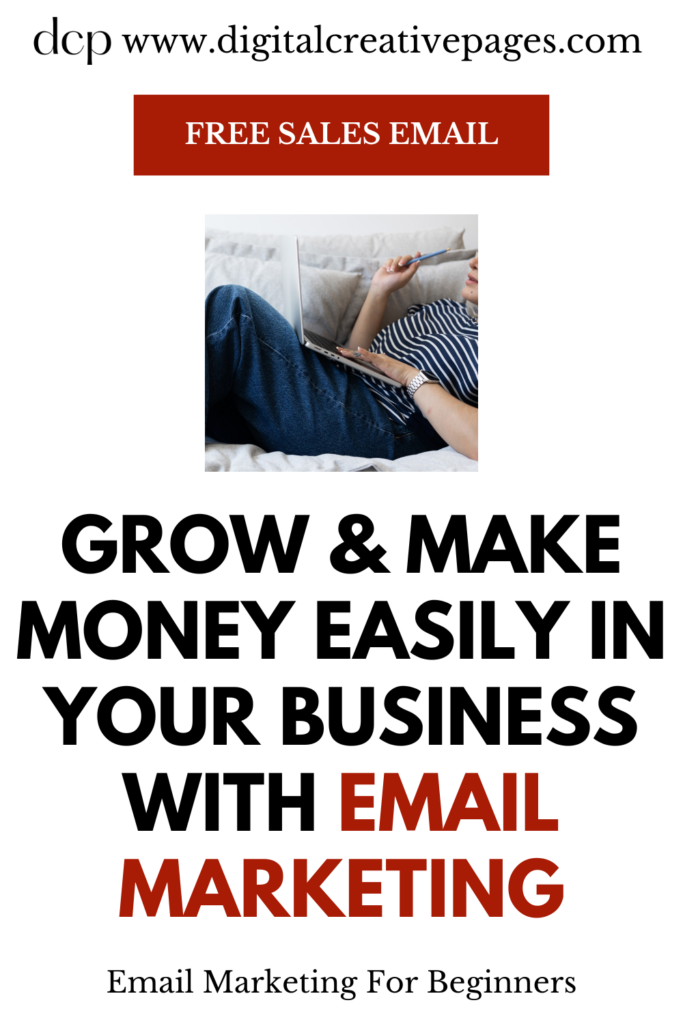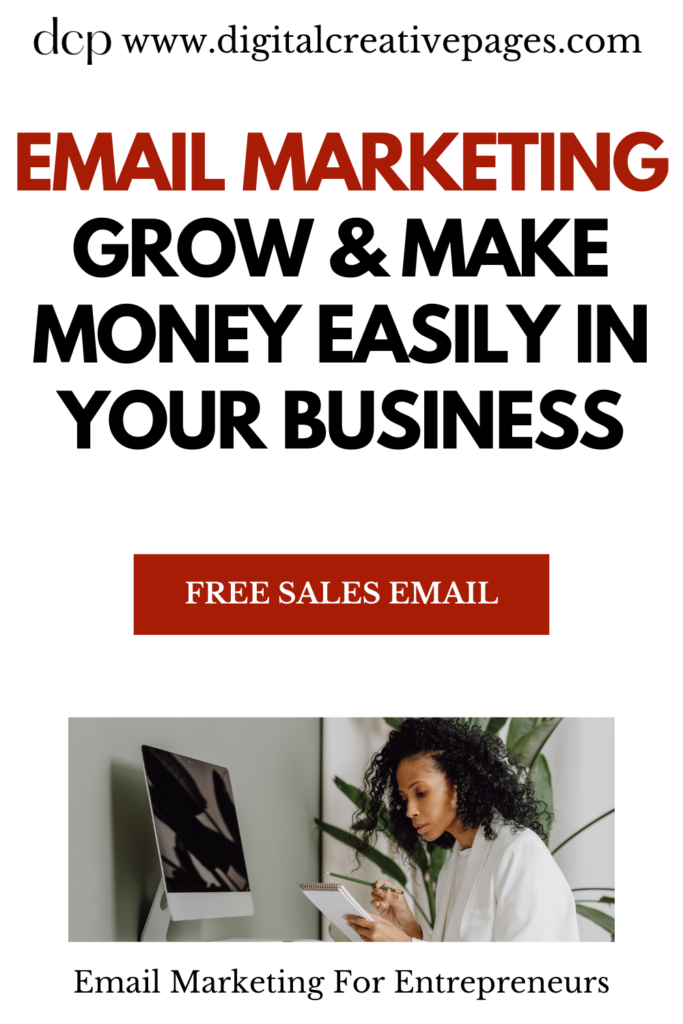Introduction
Let’s be real—email marketing in business gets a bad rap. With social media dominating the spotlight, many business owners assume the inbox is old news. But here’s the truth: email marketing is still one of the most powerful, cost-effective ways to build real relationships and grow revenue.
If you’ve been wondering how email can actually move the needle in your business (beyond just a newsletter), this is for you. In this post, I’m diving into what email marketing really does for your business and the clear, practical ways it can help you earn.
(And don’t worry—if you missed the basics like how to build your list or get started, we covered that in Part 1 of this series. You can find it HERE.)
Pin this for later
Can Email Marketing Help Your Business?
Short answer? Absolutely! But let’s dive deeper into how email marketing can be a game-changer for your business. Think of email marketing as a Swiss Army knife in your business toolkit. It’s versatile, effective, and can help you tackle a variety of business challenges. Whether you’re looking to boost sales, improve customer relationships, or establish your brand, email marketing can play a crucial role.
Here’s how email marketing can turbocharge your business:
1. Increased Sales:
This is often the most immediate and tangible benefit of email marketing. By sending targeted offers to interested subscribers, you can boost your conversion rates and sales. But it’s not just about blasting your list with promotions. The real magic happens when you use segmentation and personalization to send the right offers to the right people at the right time.
For example, let’s say you run an online pet supply store. You could segment your list based on the type of pet each customer has, then send cat owners a special offer on cat food, while dog owners receive a promotion for dog toys. This targeted approach can significantly increase your conversion rates.
2. Improved Customer Retention
It’s often said that it’s cheaper to keep an existing customer than to acquire a new one. Email marketing is a powerful tool for customer retention. Regular communication keeps your brand fresh in customers’ minds, encouraging repeat business.
You can use emails to provide added value beyond your products – think care tips, user guides, or interesting industry news. This positions your brand as a helpful resource, not just a place to buy stuff.
3. Enhanced Brand Awareness
Every email you send is an opportunity to strengthen your brand. From your logo and color scheme to your tone of voice, each element reinforces your brand identity. Over time, this consistent exposure builds familiarity and trust with your audience.
But brand awareness isn’t just about looks – it’s also about values. Use your emails to share your company’s story, highlight your community involvement, or showcase your commitment to quality. This helps create an emotional connection with your audience that goes beyond transactions.
4. Better Customer Insights
One of the often-overlooked benefits of email marketing is the wealth of data it provides. Through email analytics, you can gain valuable insights into your customers’ preferences and behaviors. Which types of subject lines get the most opens? What kind of content gets the most clicks? What time of day do your emails perform best? This information is gold for refining your marketing strategy.
You can also use email to directly ask your customers for feedback. Surveys, preference centers, and even reply-to emails can provide invaluable insights that help you improve your products and services.
5. Cost-Effective Marketing
When it comes to return on investment (ROI), email marketing is hard to beat. Unlike paid advertising where you’re charged for every impression or click, with email marketing, you can reach thousands of people for a minimal cost.
The Direct Marketing Association reports that email marketing typically returns $42 for every $1 spent. That’s an ROI that’s hard to ignore! Plus, email marketing is scalable. Whether you’re sending to 100 subscribers or 100,000, the fundamentals remain the same. This makes it an ideal channel for businesses of all sizes.
But here’s the thing – email marketing isn’t a magic wand. It requires strategy, creativity, and consistency to truly shine. It’s not about sending more emails; it’s about sending better emails. Emails that your subscribers actually look forward to opening. When you achieve that, you’ll see firsthand how powerful email marketing can be for your business.
Save this for later
How Email Marketing Can Make Money
Now we’re talking! Let’s dive into the juicy part – how you can turn those emails into cold, hard cash. But remember, the key to monetizing your email list is to always, always provide value first. Your subscribers are giving you their attention, and that’s a precious commodity in today’s world. Respect it, and they’ll reward you with their business.
1. Direct Sales
This is the most straightforward way to make money from your email list. Promote your products or services directly in your emails. But here’s the trick – don’t just send a catalog of your products. Instead, focus on the benefits. Tell stories about how your product solved a problem for a customer. Use compelling copy and irresistible offers to drive sales.
For example, if you’re selling a course on productivity, don’t just list the modules. Paint a picture of how the student’s life will change after taking the course. Will they finally have time for that hobby they’ve been neglecting? Will they impress their boss with their increased output? Make it tangible and exciting.
2. Upsells and Cross-sells
Once a customer has made a purchase, they’re primed to buy again. Use post-purchase emails to suggest complementary products. If someone bought a camera from your electronics store, follow up with emails about camera bags, tripods, or photography courses.
The key here is relevance and timing. Don’t try to upsell immediately after a purchase – give the customer some time to enjoy their new product first. And make sure your suggestions truly add value to their original purchase.
3. Affiliate Marketing
This is where you promote other companies’ products in your emails and earn a commission on any resulting sales. It’s a great way to monetize your list if you don’t have your own products to sell, or if you want to offer your subscribers a wider range of solutions.
The golden rule of affiliate marketing is to only promote products you truly believe in. Your subscribers trust you, and if you recommend subpar products just to make a quick buck, you’ll lose that trust fast. Be transparent about your affiliate relationships, and focus on how the product will benefit your subscribers
4. Sponsored Content
Once you have a substantial and engaged list, you might find other businesses willing to pay to reach your audience. This could involve including a partner’s offer in your newsletter or sending a dedicated email about their product.
Always disclose sponsored content clearly to your subscribers. And be very selective about who you partner with – make sure it’s a product or service that truly aligns with your audience’s interests and needs.
5. Recurring Revenue
Email marketing can be a powerful tool for promoting subscription-based services or products. Whether it’s a monthly box, a software service, or a membership site, email allows you to continuously demonstrate the value of the subscription to both potential and current subscribers.
Use your emails to highlight different features each week, share success stories from members, or offer special bonuses for long-term subscribers. The key is to consistently remind your subscribers why they signed up (or should sign up) and what they’re getting for their money.
Remember, the real power of email marketing isn’t in any single email – it’s in the relationship you build with your subscribers over time. By consistently providing value, you earn the right to promote your offerings. And when you do promote, your subscribers are much more likely to buy because they know, like, and trust you.
Grab my FREE email welcome sequence template here to start strong!
Wrap-Up
Here’s the thing—email marketing isn’t just about sending offers and hoping someone bites. It’s about building a connection with your audience and giving them something they actually want to open. Once you shift your focus to value and consistency, the sales naturally follow.
Coming up next in Part 3, we’ll get into the tools, platforms, and sending strategies that make this all feel seamless—no tech headaches, no guesswork. I’ll help you choose the right software for your business and map out when to hit send so your emails get opened (and clicked).
MY TOP POSTS
Stay connected outside my social media with my weekly Newsletter – Digital Content Pages
My introducer post – check out why I chose Showit as my website builder here
Use my code DCP to get one 1.5 months free on Showit
Get all the resources for your social media and digital marketing without breaking the bank from my DCP Shop here
Pin this for later



